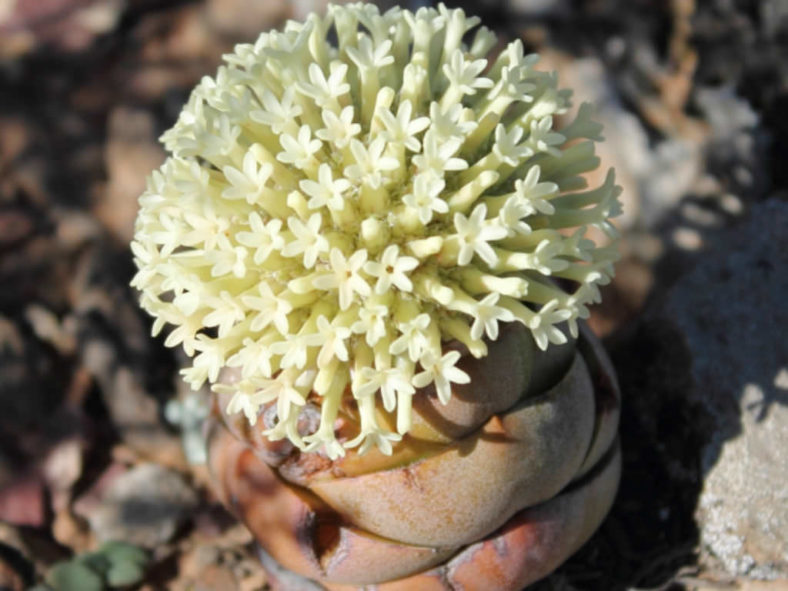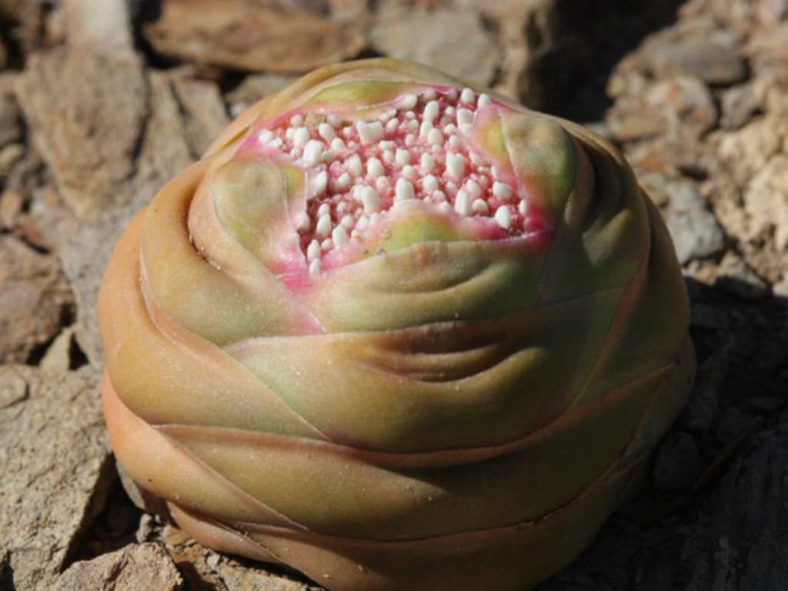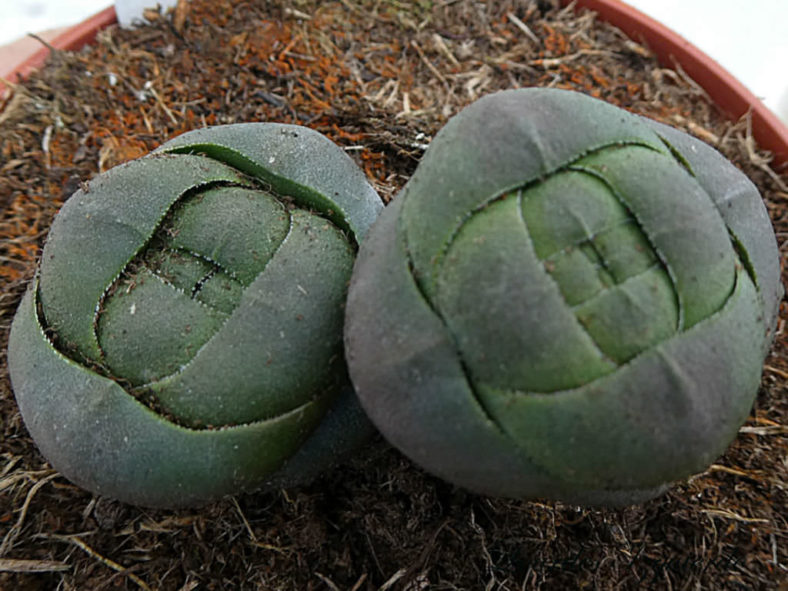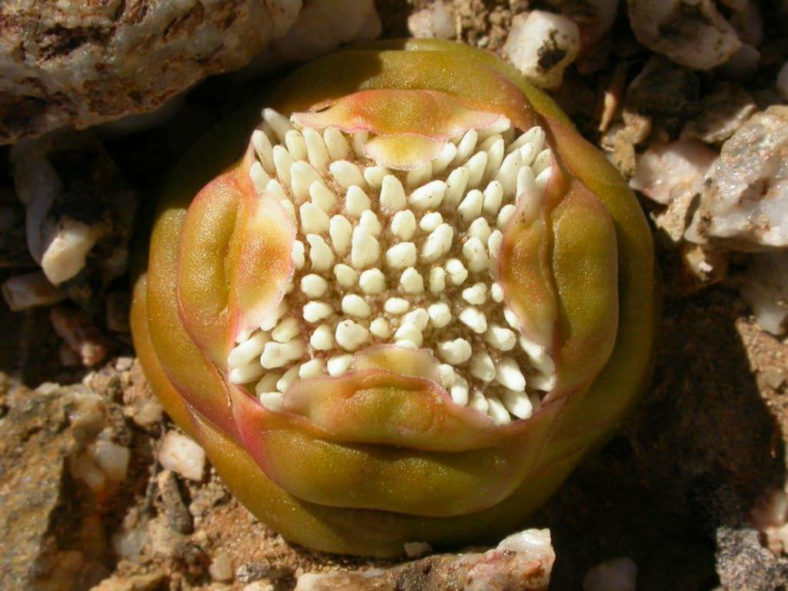Scientific Name
Crassula columnaris L.f.
Common Name(s)
Khaki Button, Scent Bottle, Upright Crassula, locally known as Koesnaatjie
Synonym(s)
Crassula columnaris subsp. columnaris, Crassula mitrata, Tetraphyle columnaris
Scientific Classification
Family: Crassulaceae
Subfamily: Crassuloideae
Genus: Crassula
Etymology
The specific epithet "columnaris (kol-LUM-nair-iss)" means "rising in the form of a pillar, pillar-like, columnar" and refers to the growth habit of this species.
Origin
Crassula columnaris is native to South Africa and Namibia.
Description
Crassula columnaris is a dwarf succulent with a short, erect stem completely hidden by 8 to 10 tightly packed leaf pairs, forming a tapering columnar body. It grows solitary or spreads into small clusters by branching below ground, reaching up to 4 inches (10 cm) in height and 1.4 inches (3.5 cm) in diameter. The leaves are brownish-green, have a rounded tip, and can grow up to 0.6 inches (1.5 cm) long and 1.2 inches (3 cm) wide.
The flowers are white, pale yellow, often tinged with red, and appear in winter or early spring clustered in a compact round head at the top of the stem. This species is monocarpic. It takes several years to mature and die after flowering.

How to Grow and Care for Crassula columnaris
Light: Crassula plants prefer full sun to partial shade. However, intense afternoon sun in the hottest period of summer can burn the leaves of the plants. Most Crassulas can be grown indoors if given enough light.
Soil: They are not particular about soil pH, but Crassulas require very porous soil with excellent drainage.
Hardiness: Crassula columnaris can withstand temperatures as low as 20 to 50 °F (-6.7 to 10 °C), USDA hardiness zones 9a to 11b.
Watering: These plants have typical watering needs for succulents. Avoid overwatering using the "soak and dry" method, where the soil is soaked with water, slowly drained, and left to dry out before watering again. Reduce watering in winter.
Fertilizing: Crassulas will benefit from a small amount of organic fertilizer in mid-spring when they start actively growing.
Repotting: Repot as needed, preferably in spring, at the beginning of active growth.
Propagation: Crassulas are generally started by leaves or stem cuttings. They can also be grown from seeds and offsets.
Learn more at How to Grow and Care for Crassula.
Toxicity of Crassula columnaris
Crassula plants are generally nontoxic to people and pets.
Subspecies of Crassula columnaris
Links
- Back to genus Crassula
- Succupedia: Browse succulents by Scientific Name, Common Name, Genus, Family, USDA Hardiness Zone, Origin, or cacti by Genus
Photo Gallery
Click on a photo to see a larger version.


